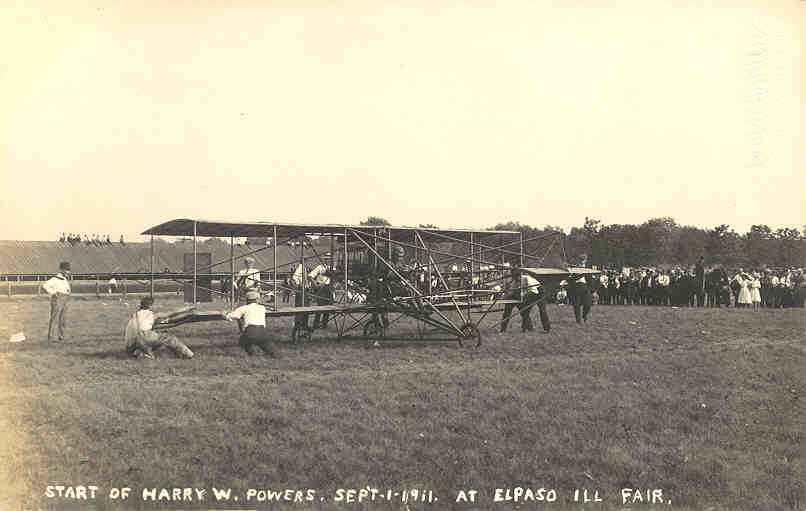
Acrobats and aerialists, trained animals and silly clowns, horses trained to almost human intelligence; all were incredible performers doing incredible things right before your eyes. There was auto polo too. The balloon finally lost its appeal after the advent of the airplane. Closely following the flight by Walter Brookins in Peoria in 1910, first powered flight in central Illinois, came the one at the 1911 El Paso fair by Harry Powers in a Curtiss biplane. The infield presented a short runway considering lack of power in those early engines and Powers had a close call on his first day's flight but he landed safely. In the take-off the second day, he crashed on the northwest corner of the grounds and smashed his airplane into bits, most of which were carried away by the souvenir hunters. It was the first airplane wreck in central Illinois, and Powers was lucky he was

Ruth Law gave the most perfect airplane exhibition of the three aviators who came to the El Paso fairs. She performed a flight each day with a passenger who made a parachute jump. About that time Catherine Stinson also exhibited here. She got her underpowered Stinson into the air, barely clearing telephone wires at the east end of
Page 86